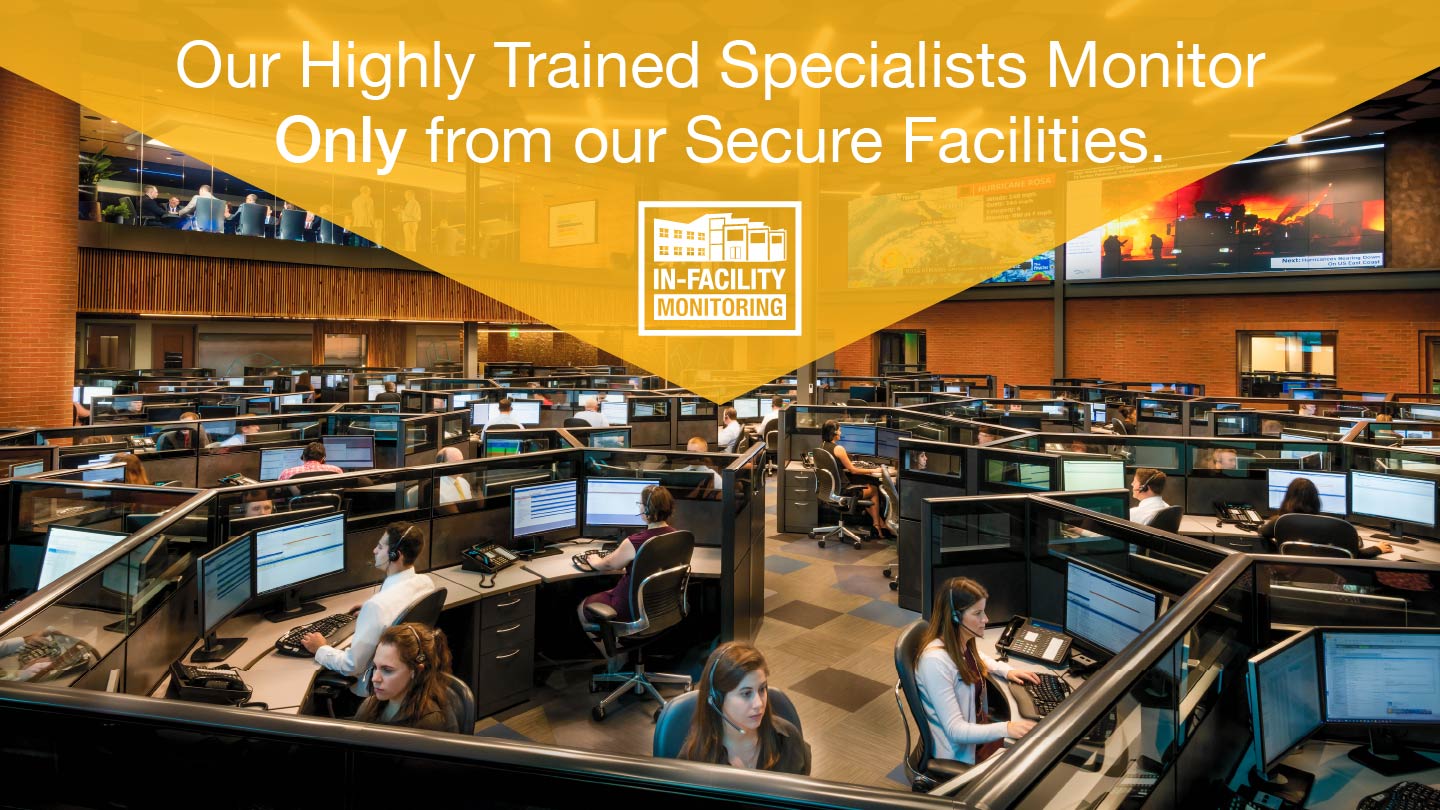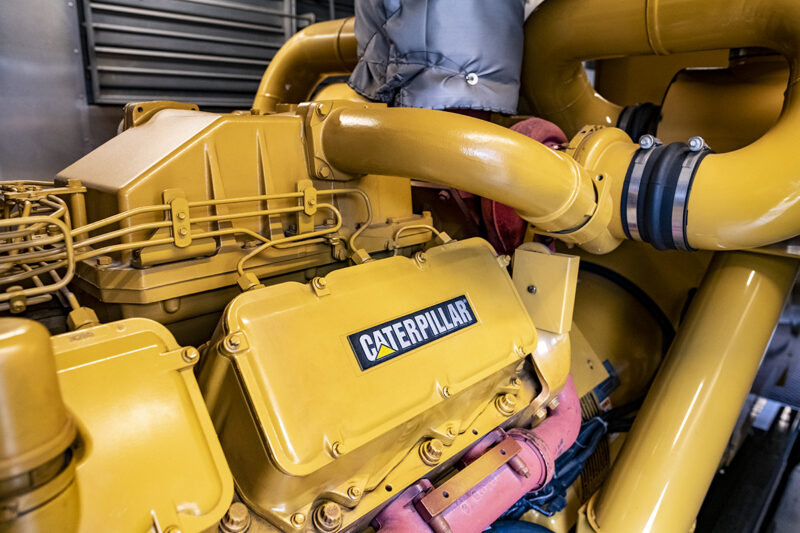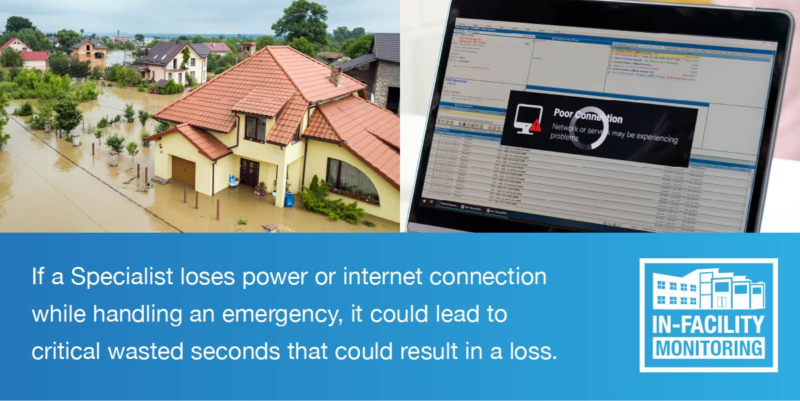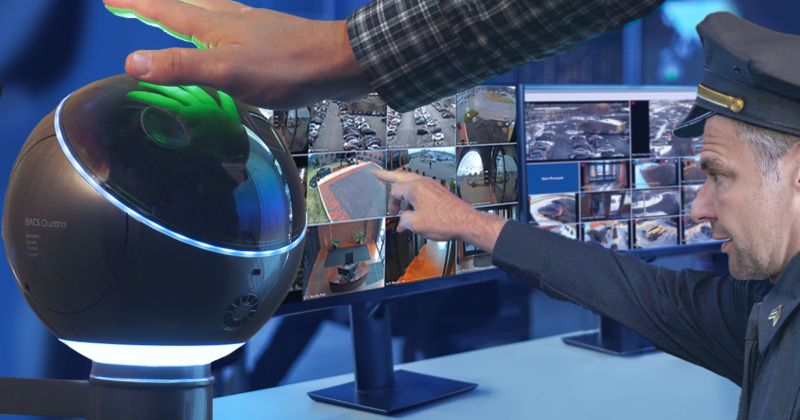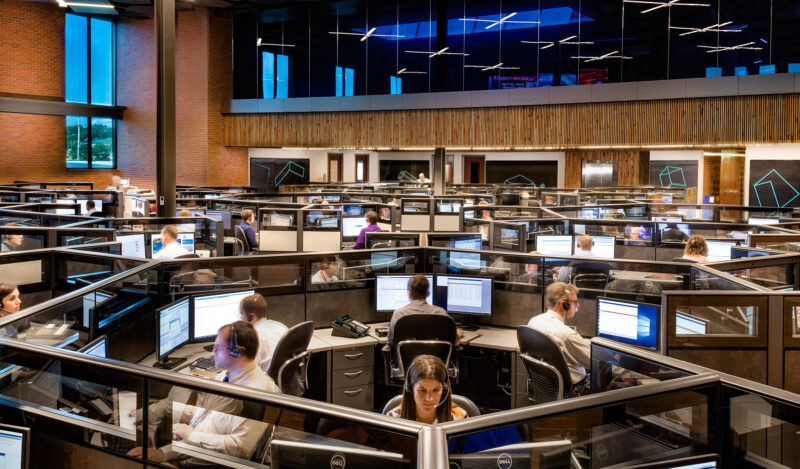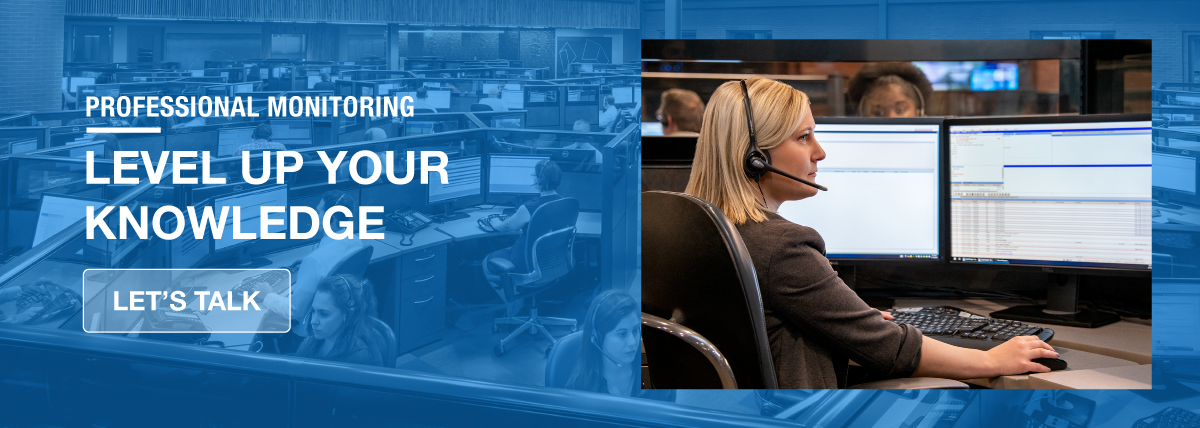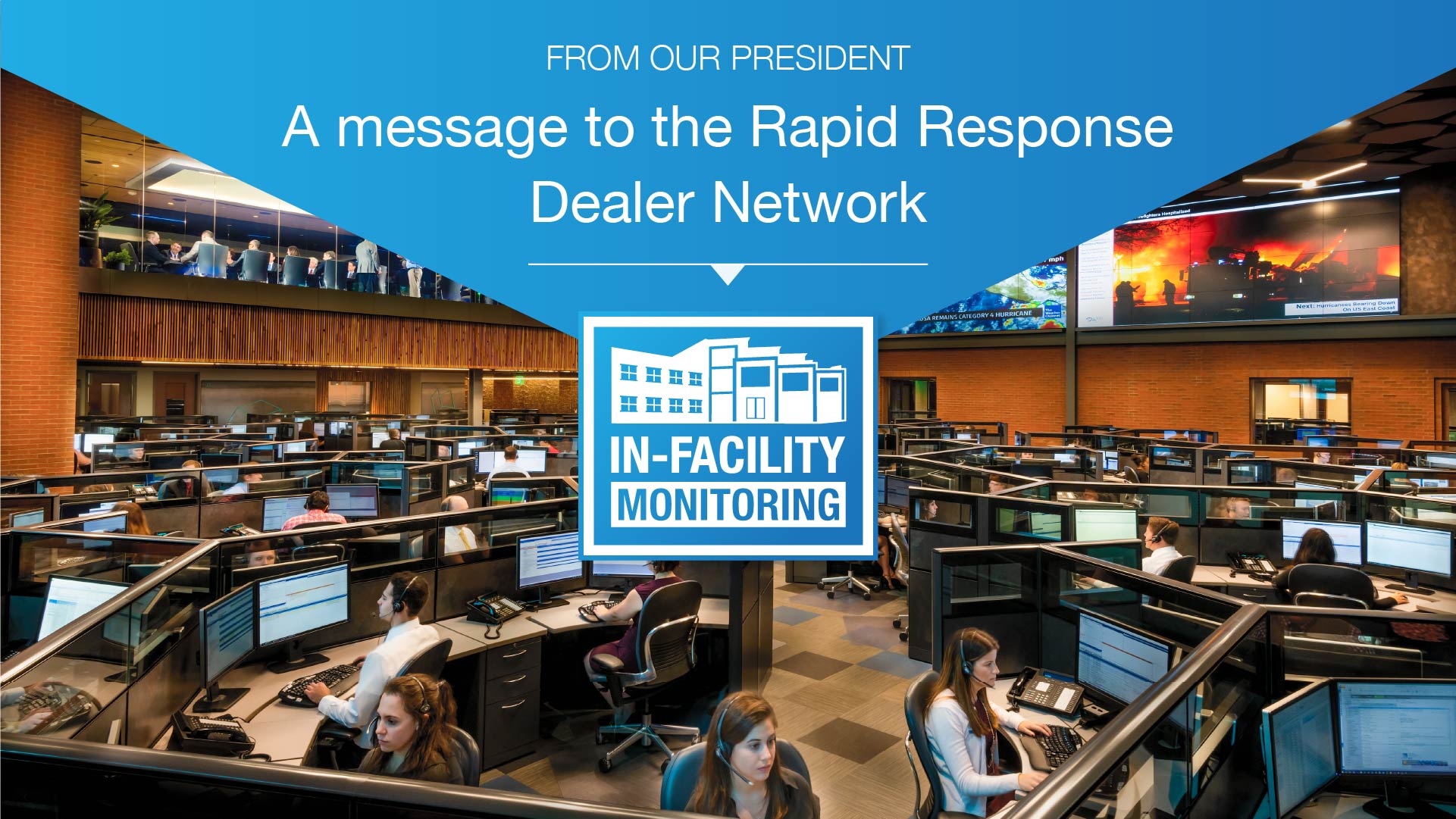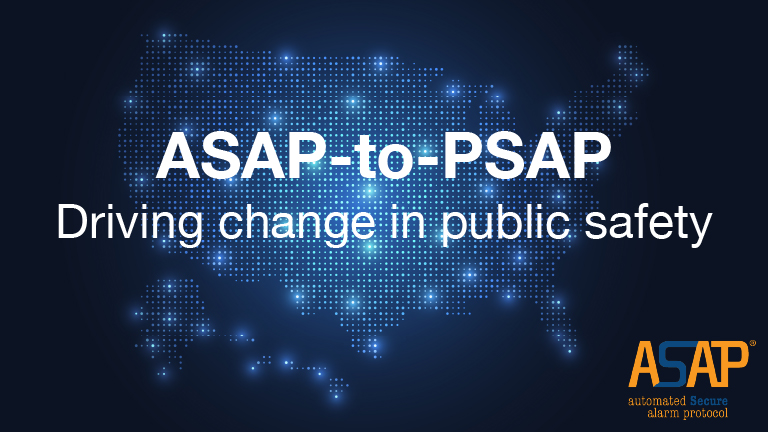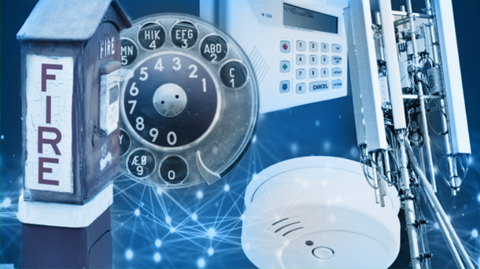Since the onset of professional monitoring, the importance of data, power, and telecommunications redundancy has been widely acknowledged. Redundancy is critical to protecting lives and property.
When Rapid Response was founded in 1992, our Chairman & CEO, Russell MacDonnell, and President, Jeffrey Atkins, assumed a deep responsibility knowing that lives depend on us. Rapid Response was built upon the philosophy of always exceeding all minimum requirements for redundancy and providing the most sophisticated level of service to our Dealers and their customers.
As an example, the UL 827 standard requires the largest monitoring centers to have at least two generators and 1-2 UPS (Uninterrupted Power Supply Units) to power critical operations. Rapid Response has always maintained at least double the UL power supply requirements which backup not only the critical operations, but all aspects of the facility, in addition to having automatic failover capability to any of our two other locations.
When the need for dispersed workspaces became evident due to COVID-19, we had to make decisions on how to respond. Coming up with a plan that kept our team safe while maintaining our commitment to always delivering the highest level of service and redundancy was of extreme importance.
However, we never contemplated an at-home monitoring model because of the high-level risks that would have introduced. When we were in the design phases of the expansion project for our Headquarters facility in 2011, we included leading-edge technologies to minimize the spread of disease, such as specially designed operator workstations and a Stage II UV air purifying HVAC system. We also outlined the installation of 17 additional independent touchless restrooms for added safety and comfort for our team.
In March of 2020, the decision to maintain critical monitoring operations fully from our facilities was easy, thanks to our prior pro-active design. We spread our Operations team throughout our facilities, instituted no-contact thermal imaging systems, provided all employees with a no contact thermometer, employed cleaning staff to work around the clock, and strictly followed the CDC guidelines, including mask requirements.
There are three main factors that can jeopardize the value of professional monitoring services when monitoring from home:
1. Reliability of Power and Internet Connection
Each of our facilities is designed to run on a primary generator set as the main source of power should there ever be a grid outage. This high-end equipment has the fuel storage, duty rating, and reliability to provide full-time, full-capacity electricity.
Rapid Response has enough private power generation at each of our Command Centers to ensure ongoing power indefinitely. This power generation is ensured by our on-site fuel storage in independent redundant tanks and our status as a critical services recipient of fuel.
Electricity runs through our enterprise-scale UPS systems with digital switching controls to eliminate gaps between grid failure and generator spinup. Combined with quad-bus wiring to every piece of equipment in our facilities, power failure is practically impossible.
It goes without saying that it is not financially feasible for individual Monitoring Specialists to achieve this level of power redundancy in their homes, not to mention the logistical challenges of installing and maintaining such systems.
The risks of losing power or internet connection while monitoring from home are exacerbated by extreme weather conditions that have been on the rise. Floods, hurricanes, and snowstorms have left multiple parts of the country without power for weeks.
Relying on at-home Monitoring Specialists to provide critical monitoring services would introduce a higher degree of uncertainty and jeopardize the value of our services. If a Specialist’s home loses power or internet connection while on the phone with a customer who is having an emergency, that could lead to critical wasted time that could result in a loss. These situations can be easily mitigated when monitoring from our hardened facilities with robust power and telecommunication redundancy systems in place.
2. Data Security
When monitoring from home, confidential account information is easily accessible by non-authorized personnel. Even employees themselves could misuse or leak personal information, intentionally or not.
Moreover, at-home monitoring Specialists are susceptible to the same risks they monitor for, including burglaries and fires.
In contrast, our 24/7 security guards, coupled with multiple biometrics and card access scanners, guarantee that only authorized personnel are granted access into our Monitoring Centers. With In-Facility Monitoring, Dealers and their customers can be assured that their accounts remain in safe hands.
3. Quality of Customer Service
Monitoring systems from home results in countless opportunities for Specialists to be disrupted, leading to missed alarms, delayed responses, and increased room for error.
Whether it is a child demanding attention, a dog barking, a delivery person ringing the doorbell, a smoke detector going off, or a cat stepping on the keyboard, among many others, these distractions impact the quality and reliability of monitoring services. Even if the interruptions are short-lived, they can be enough to cause the Monitoring Specialist to miss critical details.
Imagine your customer’s system goes off, a Specialist calls, and then gets distracted by their child demanding attention. Imagine they are dispatching first responders, and they give the wrong address because their dog is barking incessantly… In an emergency, seconds save lives, and a small mistake could prevent first responders from assisting someone in need.
In our Monitoring Centers, not only are these situations not a concern, but also, we take additional measures to minimize distractions and create an optimal work environment for monitoring:
- Designated phone areas: We have a designated area to keep personal phones while working. No cell phones are allowed in the monitoring center at any time. This measure is taken to prevent distractions that can arise from personal phones, including ringing/buzzing, as well as to further secure data privacy and confidentiality.
- Pod workstations: Our workstations are designed to improve efficiency and collaboration between Specialists and supervisors allowing for immediate support. In addition, we have invested in standing desks and ergonomic chairs for all our Specialists.
- Soundproofing materials and architecture: To block out everyday external noise, we designed our Monitoring Centers with sound reduction in mind, which creates a quiet environment for our Specialists to work in. We also learned through feedback that our Specialists prefer dim lighting, as it helps with better viewing of their monitors and concentration.
We strive to provide the very best customer service, which starts with the location where monitoring is being conducted. We believe at-home monitoring setups are vulnerable to various forms of distractions, leading to a significant decrease in the level of service.
In the words of our President, Jeffrey Atkins, “When we founded Rapid Response, we knew the people we hire, the training they receive, and the redundancy of the technology we deploy were key to our mission of providing the very best monitoring services in the industry. I never second-guessed our choice to monitor from within our facilities. That would have directly contradicted the mission upon which Rapid Response was founded.”
We firmly believe that monitoring from within our facilities is the most effective way to ensure that our quality assurance standards are met consistently. We have a strong commitment to our mission and are dedicated to continuing to be a leading provider of monitoring services in the industry.
To read more about our commitment to In-Facility Monitoring, click here.
